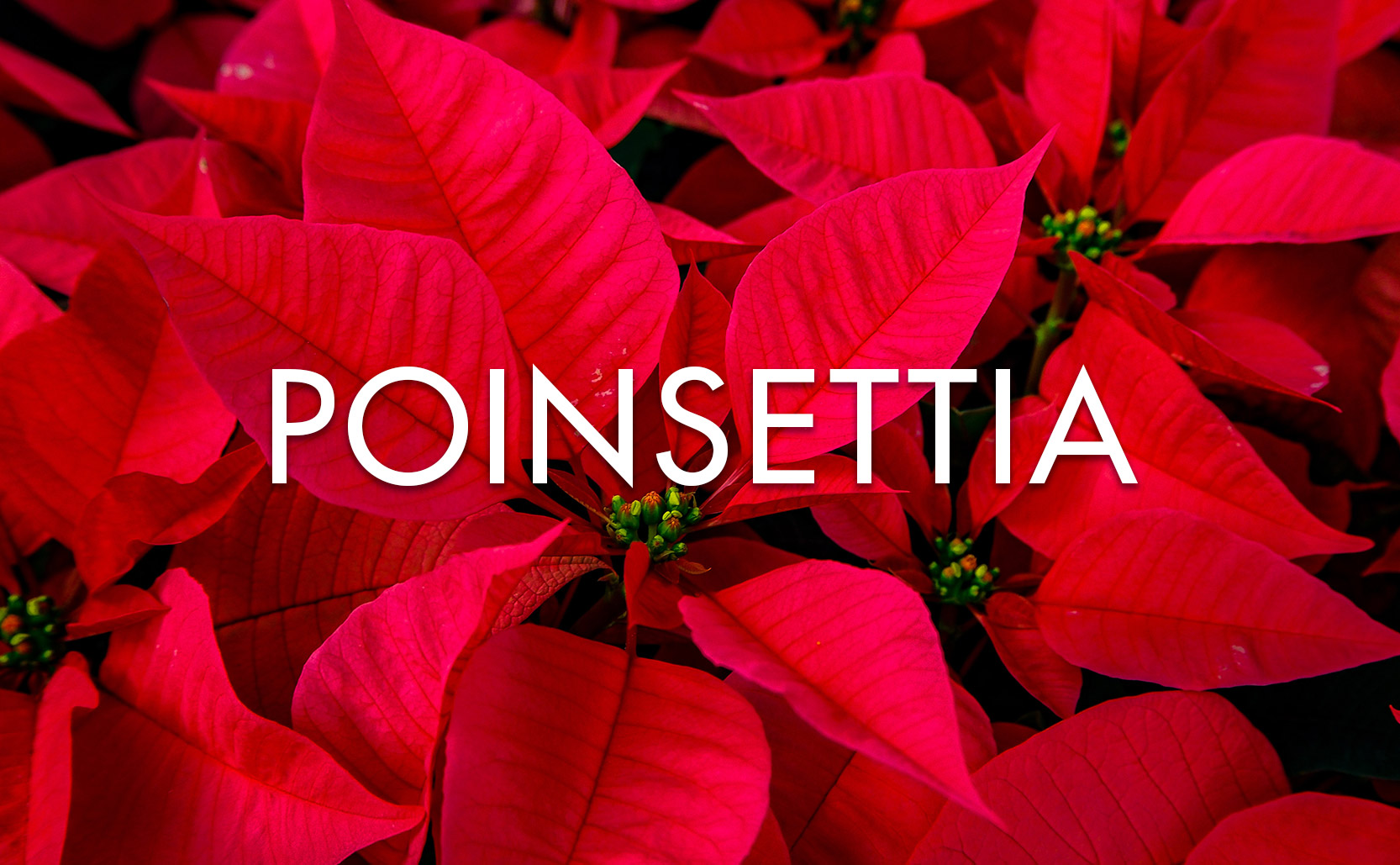Poinsettia
The Mexican plant that has become a standard part of Christmas (and isn’t poisonous).
The poinsettia comes from Mexico & Guatemala and, in its untamed form, grows to be fairly gangly and around 10ft tall. Over the centuries it’s been selectively bred to be about 2ft tall with very dense foliage. The most well-known characteristic of the poinsettia is of course the bright red leaves along the top of the plant. These red leaves are not flowers but are the bracts of the poinsettia – specialized leaves that are different than the rest of the plant (the actual flowers, aka. the cyathia, are the small buds at the center of the red bracts). These special leaves are green until late autumn when, in the cooler shorter days, they turn red.
Poinsett to Poinsettia
The plant had already been known & used by the Aztecs for dyes and medicine but it came to the attention of the Western world through US Minister to Mexico (and amateur botanist) Joel Roberts Poinsett. Specimens had already been collected around 1803 by German scientific superstar Alexander von Humboldt, but it was re-discovered by Poinsett who introduced the plant to the US.
In 1828 Poinsett sent plants & seeds to Bartram’s Garden in Philadelphia (contrary to internet rumoring, there is no definitive proof that he sent poinsettia plants home to his native South Carolina). In 1835 Scottish horticulturalist and active member of the Philadelphia Horticultural Society Robert Buist named the plant the Euphorbia Poinsettia in honor of Poinsett. Buist also helped introduce the poinsettia to Europe.

Paul Ecke Ranch
Over the next century the poinsettia was cultivated into different varieties – shorter, taller, different colors, different patterns. The Paul Ecke Ranch of California have cultivated and sold poinsettias since the early 20th century. Having successfully produced cultivars which were more beautiful, more compact, and sturdier than other varieties, the Ecke family began to create and then dominate the market.
For decades they would send free poinsettias from November through December to a variety of media outlets. Ecke Rach poinsettias appeared on the Tonight Show, Bob Hope Christmas specials, the Dinah Shore Show, in magazines such as Ladies Home Journal and Better Homes & Gardens – all of which furthered the popularity and demand for poinsettias at Christmas. Today the Ecke Ranch (who were sold to the Agribio Group in 2012) is the largest poinsettia producer in the world with about a 50% share of the global market and around 70% of the domestic US market.
That Plant is … Safe
Poinsettias are not poisonous. While you or your pets probably shouldn’t eat the leaves of a poinsettia, you wouldn’t be struck dead if you did. The myth that they are deadly most likely goes back to 1919 when a child in Hawaii died of poisoning which was wrongly attributed to the poinsettia leaf. Research has shown that you would have to eat hundreds of leaves to produce mild irritation or vomiting at most. Given that the leaves are unpalatable and very bitter it’s unlikely you would eat enough to suffer the consequences.


